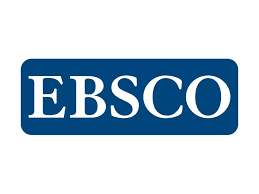Use some statistical algorithms in mock hacking satellite image
DOI:
https://doi.org/10.33095/jeas.v24i108.1345Keywords:
Image Segmentation, Thresholding Techniques, Niblack's Thresholding, Sauvola's Thresholding, Bernsen's ThresholdingAbstract
In the recent years, remote sensing applications have a great interest because it's offers many advantages, benefits and possibilities for the applications that using this concept, satellite it's one must important applications for remote sensing, it's provide us with multispectral images allow as study many problems like changing in ecological cover or biodiversity for earth surfers, and illustrated biological diversity of the studied areas by the presentation of the different areas of the scene taken depending on the length of the characteristic wave, Thresholding it's a common used operation for image segmentation, it's seek to extract a monochrome image from gray image by segment this image to two region (foreground & background) depending on pixels intensity to reducing image distortion, and also separated the target area from the rest of scene features under study, so we seek to used number of thresholding techniques in this paper for clarify the importance of this concept in image processing and we proposed a new statistical thresholding techniques which compared with techniques used, and the result showed the advantage of proposed techniques that achieved from applying the techniques on multispectral satellite image takin for an area west of Iraq that characterized their environmental diversity so it's a good case to study.
Downloads
Published
Issue
Section
License

This work is licensed under a Creative Commons Attribution-NonCommercial-NoDerivatives 4.0 International License.
Articles submitted to the journal should not have been published before in their current or substantially similar form or be under consideration for publication with another journal. Please see JEAS originality guidelines for details. Use this in conjunction with the points below about references, before submission i.e. always attribute clearly using either indented text or quote marks as well as making use of the preferred Harvard style of formatting. Authors submitting articles for publication warrant that the work is not an infringement of any existing copyright and will indemnify the publisher against any breach of such warranty. For ease of dissemination and to ensure proper policing of use, papers and contributions become the legal copyright of the publisher unless otherwise agreed.
The editor may make use of Turtitin software for checking the originality of submissions received.


























